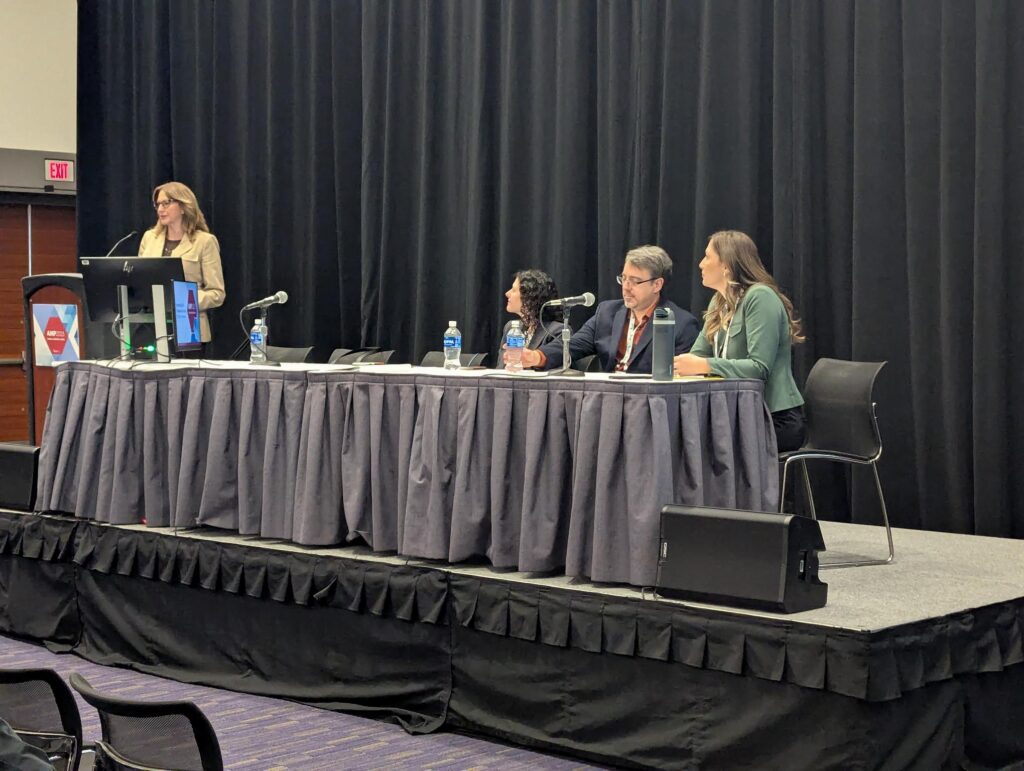The regulatory landscape for laboratory-developed tests (LDTs) has shifted more in the past 18 months than in the previous decade. This morning’s AMP 2025 breakout session “LDTs Under the Microscope: Regulatory and Legislative Updates” brought clarity, context, and a clear call to action for labs, clinicians, and diagnostics companies navigating a rapidly evolving environment.
A major victory—but not the end of the story
The session opened with what AMP leaders called “a great victory, but not the end of the threats.” That victory, of course, was Judge Jeremy Jordan’s March 31, 2025 decision vacating the FDA’s sweeping 2024 final rule, which would have treated many LDTs as medical devices under 21 CFR 809.3. AMP, joined by the College of American Pathologists (CAP), the Association for Diagnostics & Laboratory Med (ADLM), Infectious Diseases Society of America (IDSA), and others, filed suit arguing that Congress had never authorized FDA to regulate LDTs as medical devices—and that such a move would produce enormous harm.
Eric Q. Konnick, MD, a certified pathologist at the Fred Hutchinson Cancer Center and at the University of Washington Medical Center, provided a concise refresher: LDTs are performed in Clinical Laboratory Improvement Amendments (CLIA)-certified laboratories and historically overseen under CLIA, not FDA. The FDA’s 2024 rule, in AMP’s view, ignored decades of congressional intent and misapplied “manufacturer” definitions to clinical laboratories that do not commercially distribute tests.
The potential impact was staggering:
- $114B in one-time compliance costs
- $14.3B in annual recurring costs
- Anticipated lab consolidation, reduced access, and diminished innovation—particularly for small and rural labs
- Severe disruption to the supply chain for tests that support oncology, infectious disease, newborn screening, and more
AMP argued the FDA’s actions were “arbitrary, capricious,” and legally unsupported. On February 19, 2025, during oral arguments in Texas, those points received significant attention from the court. Just six weeks later, Judge Jordan ruled decisively for the plaintiffs. On September 19, 2025, FDA formally rescinded its rule—bringing the definition of in vitro diagnostics back to its long-standing pre-2024 language.
Two decades of advocacy paying off—but more work ahead
If Konnick laid out the legal trajectory, Karen Weck, MD, professor at University of North Carolina School of Medicine, mapped the long road of AMP advocacy that made this moment possible.
Since 2005, AMP has:
- Submitted 90+ letters to Congress
- Mobilized grassroots action alerts
- Led and joined numerous multi-organization sign-on letters
- Conducted 140+ congressional meetings
- Held Advocacy Days with AMP members across the country
- Advised the introduction of multiple bills challenging FDA’s approach
- Engaged in White House-level discussions and direct meetings with FDA leadership
At the same time, AMP has not been merely reactive. It has proposed legislative solutions, including a 2018 CLIA modernization framework, updated again this year, and supported bills like the VITAL Act—which did not pass but helped build congressional awareness.
The new priority: Congress must clarify CLIA, ensuring oversight of LDTs remains with the Center for Medicare and Medicaid Services (CMS) while modernizing requirements for molecular and genomic testing. AMP’s proposal includes:
- Modernized standards for high-complexity testing
- Clearer expectations for “black box” tests and error reporting
- Continued roles for third-party accreditors
- Incentives for research-only-use manufacturers to seek FDA authorization where appropriate
- Harmonized frameworks that preserve patient access while increasing transparency and quality
Senator Bill Cassidy, MD, (R-LA), a gastroenterologist, received notable praise for asserting, “The FDA does not have the authority to unilaterally increase its regulatory jurisdiction.” With Medical Device User Fee Amendments (MDUFA) reauthorization coming in 2027, AMP believes there is a real window to lock in durable legislative clarity.
A new advocacy landscape
Megan Anderson Brooks, PhD, the president of Innovation Policy Solutions, rounded out the session by assessing the post-lawsuit reality on Capitol Hill.
While some champions, like Cassidy, are stepping back in 2026, AMP’s courtroom win has broadened coalitions and strengthened the argument for a CLIA-centered framework. She also noted the surprising role of the previous administration’s deregulatory posture—creating timing that ultimately benefited AMP’s legal challenge.
Brooks emphasized continued engagement with CMS’s CLIA division and highlighted related policy efforts, including broader patent eligibility reform that could intersect with genomics and testing innovation.
The bottom line for precision medicine
For the diagnostics and precision medicine community, the takeaway is clear: The FDA’s LDT rule is gone—but regulatory uncertainty is not.
AMP’s message to Congress—and the field—is unmistakable: “It’s time to clarify CLIA.”
Labs, assay developers, and health-system stakeholders should continue tracking developments closely. Regulatory certainty is essential for sustaining patient access, supporting innovation, and ensuring that molecular and genomic testing remains both high-quality and widely available.
As AMP 2025 continues, Inside Precision Medicine will provide additional on-site reporting, interviews, and insights into how these shifts are reshaping the diagnostics and precision medicine landscape.

